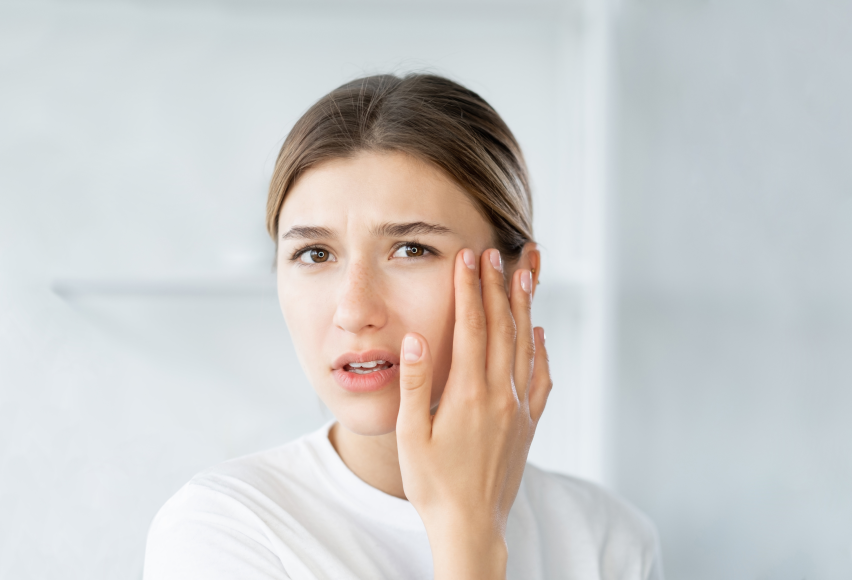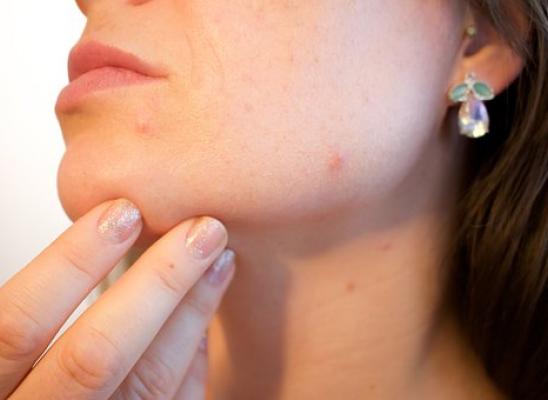Early Signs of Skin Picking: How to Know When It's More Than Fidgeting

Online test
Find out the severity of your symptoms with this free online test
We’ve all had the experience of picking at a scab or squeezing a pimple a little too much. You might have even found yourself fidgeting with your skin when you’re stressed out. It’s not uncommon and for most people, these are momentary responses and have no long term consequences. For some people though, what begins as occasionally peeling a scab or squeezing pimples becomes something more serious.
Skin picking disorder, clinically known as excoriation disorder or dermatillomania is a mental health disorder characterized by compulsive skin picking that results in visible skin damage, emotional distress, and problems functioning in daily life. It’s estimated to affect about 3.45% of the population, with women being more commonly affected than men. Yet despite its prevalence, this condition often goes unrecognized and untreated for years. Left untreated, skin picking can have significant impacts on your physical and emotional well-being. The earlier it is recognized, the better chances are for successful treatment outcomes.
But just how can you recognize it early? The answer is awareness. Understanding the early warning signs can make a significant difference in recognizing when casual skin picking has crossed into concerning territory.
Physical Signs of Skin Picking
The transition from occasional skin picking to disorder typically happens gradually, making it easy to miss the early physical signs:
Skin that never seems to heal: One of the early signs is the persistence of wounds that should have healed such as scabs that seem to remain for weeks or skin lesions that never seem to heal.
Multiple sites of skin injury: Unlike the random pimple pop, skin picking typically involves repeated picking in various areas of the body, sometimes using tools like tweezers, scissors, or needles. The face, arms, and hands are common areas.
Scarring: While minor scars from blemishes, childhood mishaps, or even something like chicken pox are not uncommon, people developing skin picking disorder may have an increasing number of skin irregularities or scars.
Emotional and Behavioral Red Flags
Skin picking is more than the skin damage it causes. Significant emotional and behavioral changes come with problematic skin picking:
Shame: Shame is a dominant emotion for many who live with skin picking. Both clinical and anecdotal evidence has found that people living with skin picking experience significant shame and embarrassment which can affect their interpersonal functioning and lead to increasing isolation and avoidance of social settings.
Attempts to conceal: People with skin picking are quite sensitive to their appearance and how it may be perceived by others. An over-riding theme is often that of worrying about people looking at and judging their appearance. As a result, they will often go to great lengths to conceal their skin damage such as wearing long sleeves, even in summer, strategically positioning their hands, using concealer, or creating excuses for the marks.
Social withdrawal/avoidance: People who live with skin picking worry excessively about having to be in social situations where they may feel judged or have to answer questions about their skin. Avoiding social situations is a commonly used strategy to escape attention. Unfortunately, this avoidance fuels feelings of isolation. This avoidance of attention should not be misconstrued as a desire to be alone. In fact, most people want to be able to interact with others and enjoy social situations. The struggle lies in overcoming the fears that come with those interactions.
Ritualistic picking: Over time, picking episodes may become ritualistic. Some people describe "trance-like" episodes of picking. Others report specific methods, timing, or conditions that influence their skin picking.
Seeking Treatment
Just what the underlying causes are for skin picking are not entirely clear. It is thought to be a combination of neurobiological, genetic, and psychological factors. What we do know is that skin picking is a treatable and manageable disorder.
The most common and most empirically-supported therapeutic approach to treating skin-picking is a type of behavioral therapy known as Habit Reversal Training (HRT). HRT is particularly appealing because it is flexible and can be used in-person, online, or as self-help. HRT has also been combined with other evidence-based approaches such as Cognitive Behavioral Therapy (CBT) or Acceptance and Commitment Therapy (ACT) for a more comprehensive approach to treatment.
Next Steps
Recovery is possible, and you don't have to navigate this challenge alone. Therapy can offer you a safe, judgment free space where you can understand these behaviors and learn effective strategies for managing skin picking.
At Skinpick, we have a team of therapists experienced in treating body-focused repetitive behaviors like skin picking using proven, evidence-based approaches and online resources that can get you on the path to recovery. And, with online therapy, you have the flexibility to schedule when and how therapy works best for you. If you’re seeing the signs of skin picking, we’re here to help.
References
1. Farhat, L. C., Reid, M., Bloch, M. H., & Olfson, E. (2023). Prevalence and gender distribution of excoriation (skin-picking) disorder: A systematic review and meta-analysis. Journal of psychiatric research, 161, 412–418. https://pubmed.ncbi.nlm.nih.gov/37023597/
2. Skin picking disorder (Excoriation). (2014, February 18). Retrieved from https://www.webmd.com/mental-health/skin-picking-disorder
3. Anderson, S., Clarke, V., & Thomas, Z. (2022). The problem with picking: Permittance, escape and shame in problematic skin picking. Psychology and Psychotherapy: Theory, Research and Practice, 96(1), 83-100. https://bpspsychub.onlinelibrary.wiley.com/doi/10.1111/papt.12427
4. Schmidt, J., Gallinat, C., & Martin, A. (2023). Appearance-related concerns in individuals with pathological skin picking—a comparison with individuals with dermatological conditions and skin-healthy controls. Frontiers in Medicine, 10. https://www.frontiersin.org/articles/10.3389/fmed.2023.1075743/full
5. Garey, J. (2025, April 1). What Is Excoriation or Skin-Picking? Retrieved from https://childmind.org/article/excoriation-or-skin-picking/
Online test
Find out the severity of your symptoms with this free online test
Start your journey with SkinPick
Take control of your life and find freedom from skin picking through professional therapy and evidence-based behavioral techniques.
Start Now



